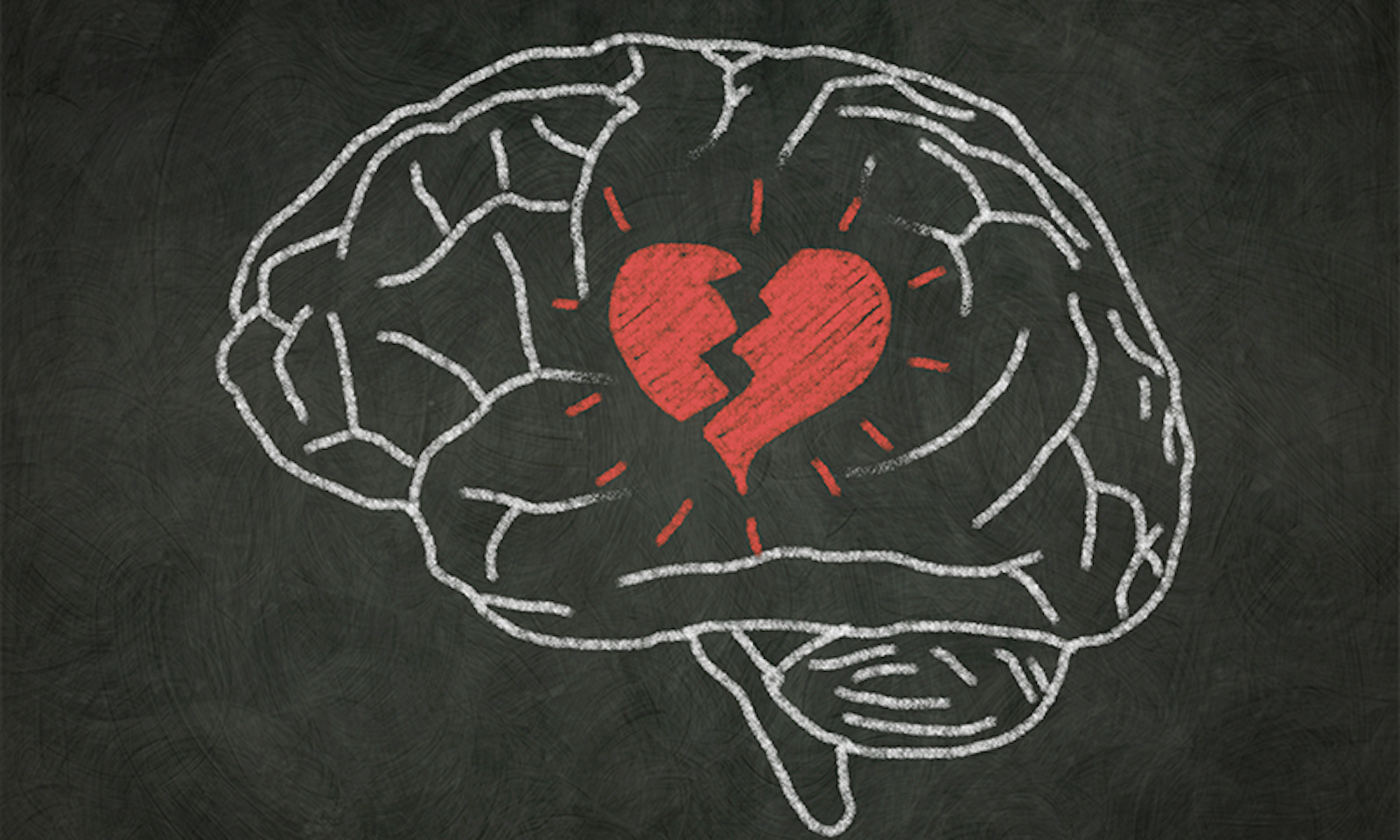On Valentine’s Day in 2016, Anne Lantoine received not flowers, but divorce papers. In the months preceding, she had been preparing for her family’s move from France to Canada—or so she thought. She arrived in Quebec early with one of her three children, who was preparing to start college there, while the other two remained in Europe for school. Her husband stayed behind to manage the sale of their house in Marseille.
Then the realtors began to complain, through a barrage of calls and emails, to Lantoine. Her husband was not acting like a man who wanted his house sold. He wasn’t answering phone calls and was never available for showings. In January 2016, Lantoine called him after yet another complaint from a realtor. The next morning, he sent her an email with a notice for a court hearing, and she discovered her husband had actually filed for divorce, without telling her, months earlier.
That February, she finally got the paperwork, not from her husband, but from her real estate agent. “It was not my last shock,” Lantoine, now 59, recalls. “I also discovered that my husband’s mistress was living in my home.” These revelations were a huge blow practically: It disrupted the immigration paperwork, and Lantoine and her daughter lost their visa applications. But the searing pain was in the betrayal and deceit.
“It doesn’t erase what happened to you. It just changes the impact it has on your life.”
“I became very anxious and had constant nightmares,” she says. “I was tired all the time and had panic attacks each time I opened my mail or my emails, or when I had an unidentified phone call.”
Though the details of each case vary, romantic betrayal through infidelity, abandonment, or emotional manipulation can upend one’s life in an instant. For Lantoine, her future plans, and the person they were attached to, were suddenly gone, and her functioning along with them.
Exhausted and an emotional wreck after almost a year, Lantoine learned about a clinical trial at the Douglas Mental Health University Institute, a Canadian psychiatric hospital in Montreal, that sought to ease the pain of romantic betrayal. The study did not rely on traditional psychotherapy sessions. It claimed it would dampen the emotional reverberations of what happened to her by pairing a beta-blocker medication called propranolol with a series of “memory reactivation sessions.” She signed up.
It sounds like science fiction, or science romantic-fiction. The 2004 movie Eternal Sunshine of the Spotless Mind often gets brought up, says Michelle Lonergan, now a postdoctoral fellow at the University of Ottawa who led the trial as part of her Ph.D. In the film, a couple, post-breakup, use a service to erase their memories of one another in response to the suffering of heartbreak.
But the experiments that Lantoine enrolled in were an attempt to use a very real feature of the brain—albeit one we’re still learning the ins and outs of—called memory reconsolidation to attenuate agonizing romantic memories.

“Memory reconsolidation” describes how, when we recall a memory, it can become pliable. There is hope—and some intriguing early data—that, at the moment of recollection, we might be able to intentionally change a memory and make it less burdensome. This ability to modulate distressing memories is being investigated as an intervention to treat post-traumatic stress disorder,1 addiction,2 phobias,3 and is thought to have promise for depression or anxiety more broadly. It rests on an idea that’s emerged from our understanding of memory over the past few decades: Memories are not fixed, even the ones that haunt us the most.
Described this year in the Journal of Affective Disorders, the study Lantoine enrolled in is the first application of a memory reconsolidation-focused treatment for adjustment disorder resulting from romantic betrayal.4 (Adjustment disorder is defined as an emotional and behavioral maladaptive reaction to a stressful event, but not a life threatening one, so it doesn’t meet criteria for PTSD.)
Unlike Eternal Sunshine, Lantoine’s memories didn’t vanish in a dramatic collapse of a beach house into the Montauk coastline. She still had the declarative memory of what had happened.5 But, as Lantoine describes it, the memories were no longer debilitating.
“The treatment doesn’t remove the remembrance of the events,” Lantoine says. “It just removes the pain that was associated with the events. It doesn’t erase what happened to you. It just changes the impact it has on your life.”
When a memory initially forms, or is consolidated, it relies on chemical interactions between neurons in our brain. When a memory is remembered, or retrieved, it can be momentarily destabilized while those same chemical processes reconsolidate the memory.
“We feel that our memories, whether they’re conscious or unconscious memories that influence our behavior, are fixed and rooted in fact,” says Joff Lee, a professor of memory neuroscience at the University of Birmingham who was not involved in the trial. “But actually, pretty much everything that we know about memory suggests that these memories are malleable, and they change for potentially good reasons.”
When presented with new information, it’s helpful for our memories to be able to update so that we can learn and adapt to our surroundings. By hijacking this feature, researchers have shown in animal models that when memories become labile, it’s possible to intervene.
“Visualize a monster, with big long claws, digging deep into your heart, ripping your heart out while you are still breathing.”
More than 50 years ago, scientists found they could induce something called “post-retrieval amnesia.”6 Rats could forget a fear response if given an electroconvulsive shock at just the right time to interrupt the reconsolidation of that memory. The study was one of the first to challenge the idea that memories, once formed, were unchanging. There are now dozens of animal studies that show that when drugs are given to block the molecules needed for memory consolidation, memories seem to vanish, even when those memories aren’t new.7
It soon became clear that memory reconsolidation could be a powerful therapeutic tool. But the methods used in animal studies to interfere with reconsolidating were often harmful to humans. Enter propranolol: a common beta blocker used for lowering blood pressure as well as for treating anxiety and preventing migraines. Propranolol impairs adrenaline hormones in the brain and is thought to impact the production of other molecules needed for memory reconsolidation.
Starting in the early 2000s, researchers showed that, in rats, the drug could have similar post-retrieval effects as the more toxic compounds. And in 2009, researchers found that propranolol could help people disengage from a learned fear response.8 In this study, scientists showed human participants images of spiders, paired with an electric shock. One day later, some were given propranolol and others a placebo. On the third day, when participants saw the same images, those who had received the placebo noticeably startled, a physical manifestation of the fear response usually paired with a negative emotional state. But those who had been given the propranolol no longer had that reaction. These participants could still remember what had happened to them; propranolol didn’t erase the facts. But they no longer exhibited the biological signs of being afraid.
Researchers soon began applying these findings to try to treat severe conditions, such as PTSD. Alain Brunet, a psychologist and researcher at the Douglas Institute and McGill University, and senior author of study Lantoine participated in, described in a 2018 paper that people with PTSD who took propranolol and received six 25-minute trauma reactivation sessions had fewer PTSD symptoms compared to a group that underwent the same sessions paired with a placebo. (He has even trademarked “Reconsolidation Therapy,” and the “Brunet Method,” which describe the protocol of pairing propranolol with memory retrieval sessions.)
Brunet has long felt that reconsolidation therapy could have wider appeal. “We wanted to broaden the uses of reconsolidation therapy,” Brunet says. So he and his team went looking for people suffering from an unfortunately common adjustment disorder—that spurred by romantic betrayal.
Anne Lantoine was of course not alone in suffering heartbreak in Quebec. Brunet and Lonergan recruited 61 people in total who were cheated on, abandoned, wiped out financially, “all kinds of horrendous stories,” Lonergan says.
The participants described being unable to sleep, gaining or losing weight, starting smoking, losing their hair, and suffering from nosebleeds. “It hurts everywhere!” as one 44-year-old woman described in a follow-up qualitative paper from the research team.9 “Your throat hurts. You can’t breathe. When you think about it you hurt … You have these really graphic images, and you can’t block them, there’s nothing you can do. It’s in your face all the time.” A 44-year-old man described his intrusive thoughts replaying “like a movie all the time.”
Being reminded of their former partners was especially distressing, like the anniversaries of when they discovered they were being cheated on, seeing photos of them online, or even seeing people who walked or talked like their former partners.
Even if we can change memories, should we?
“When I really knew that he had betrayed me, the pain, and the torture it was like I had been cut off at my knees … if you want to visualize you know like some sort of monster, with big long claws, and just digging deep into your heart, ripping your heart out while you are still breathing and alive and very conscious, and taking a bite out of your heart right in front of your face, that’s what it feels like,” a 50-year-old woman said.
In the trial, there was first a four-week waiting period when no one got any treatment. This limbo served as the control condition against which to compare the treatment. Then each person wrote a narrative of their betrayal, in as much detail as possible. In five memory reactivation sessions, they read their own descriptions one hour after taking propranolol. Compared to the waiting-period, the researchers found there was an overall significant reduction in symptoms, including intrusive thoughts, avoidance, and hypervigilance, as well as a decrease in anxiety and depression, starting after the first session. Up to four months later, those benefits remained.
“They were really in trouble,” Lonergan says. “And so we offered them treatment. And luckily, for a good chunk of them, it really seemed to work.”
The memory reconsolidation theory tells a tidy story about how practitioners might be able to help people, at least emotionally, rewrite their narratives. But does it tell the full story?
Lonergan acknowledges that there might be other factors at play. For example, the empathetic support in the retrieval sessions could have played a role in participants’ improvements, and she hopes to do future work on Adjustment Disorder and romantic betrayal with a full placebo group, the way the PTSD trial ran.
Lee thinks we should also have some humility about which mechanisms these therapies might be tapping into. Memory reconsolidation is likely a complex process that co-occurs with many other cognitive and neurobiological systems.
If just the facts of a memory remain, can we really say it’s the same?
This is underscored by the fact that results of reconsolidation therapies have not always been consistent.10, 11 Several studies have failed to replicate,7 and some even found reconsolidation attempts can lead to adverse events.12, 13 A randomized, double-blind placebo-controlled study in smokers from 2015 didn’t find any effect on physical reaction after being given a dose of propranolol.14 Three other placebo-controlled studies in people with PTSD also didn’t show any reduced symptoms.15
There could be rules and caveats to using memory reconsolidation as an effective tool that we simply don’t understand yet. Other research into memory reconsolidation has found, for example, that updating an existing memory is most effective when the brain gets just enough new information, such as a new stimulus in place of an old one that had triggered fear or loathing.16, 17 If the new information introduced is too strong, a brand new memory might be created instead of an alteration to the older memory, and the two memories will compete. “Those are all technical things that people are still figuring out,” Lonergan says.
Nevertheless, given its promise, attempting to use memory reconsolidation in therapeutic interventions seems obvious to Brunet. If we know that sometimes memories are malleable, why wouldn’t we try to target that, he says?
But even if we can change memories, should we?
Memory researchers Tom Beckers and Merel Kindt raised this point in a 2017 review.7 “Concerns have been voiced as to how desirable of a therapeutic goal it is to make people forget about significant events that have happened in their personal lives and that may play a central role in defining who they are,” they wrote.
Is it okay if just emotional parts of memory are being stripped away, as long as the declarative elements remain?
In his 19th-century essay, “What Is an Emotion,” psychologist William James challenges us to try to imagine an experience of emotion, like anger, without the elements of a racing heart or flushed face. If just the facts of a memory remain, can we really say it’s the same, once it’s been neutered of its emotionality?
But that’s somewhat the point, Lonergan says. The people in the study were not able to move on or find peace after what happened to them. Emotional memories are not sequestered to the mind. These individuals needed the intensity of the emotions dialed down so that they could sleep, eat, and resume normal day to day functioning. “We’re not specifically targeting and removing them from people’s brains—they still remember what happened,” she says. “But instead of being a traumatic memory, it’s just a bad memory.”
Further, our ability to update and modify our memory is built into us—whether aided by a drug or not. Other forms of psychotherapy similarly seek to change our relationship to and framing of our memories. The goal of a targeted, pharmaceutical intervention would be to achieve that result by way of going after the memory directly.
Lantoine says, five years out, she still feels the positive effects from the treatment. It was an improvement that came after about the third reactivation session. The daily torment she had felt receded into the background.
“It’s like a chronic pain you get rid of,” she says. “A bit like the scars I have on my knee and on my hip: I can see them, I remember I got them after painful surgeries. I remember I felt this pain. But they are not painful anymore. Those events have left scars in my brain,” she says of her experience of betrayal. “It’s impossible to forget what happened and to erase those scars. But they don’t hurt.” ![]()
Shayla Love is a freelance science journalist based in Brooklyn. Follow her at @shayla__love.
Lead image: Graphics Master / Shutterstock
References
1. Brunet, A., et al. Trauma reactivation plus propranolol is associated with durably low physiological responding during subsequent script-driven traumatic imagery. Canadian Journal of Psychiatry 59, 228-232 (2014).
2. Exton-MCGuinness, M.T.J. & Milton, A.L. Reconsolidation blockade for the treatment of addiction: challenges, new targets and opportunities. Learning & Memory 25, 492-500 (2018).
3. Maples-Keller, J.L., et al. Targeting memory reconsolidation to prevent the return of fear in patients with fear of flying. Depression and Anxiety 34, 610-620 (2017).
4. Lonergan, M., Saumier, D., Pigeon, S, Etienne, P.E., & Brunet, A. Treatment of adjustment disorder stemming from romantic betrayal using memory reactivation under propranolol: A open-label interrupted time series trial. Journal of Affective Disorders 317, 98-106 (2022).
5. Otis, J.M., Werner, C.T., & Mueller, D. Noradrenergic regulation of fear and drug-associated memory reconsolidation. Neuropsychopharmacology 40, 793-803 (2015).
6. Misanin, J.R., Miller, R.R., & Lewis, D.J. Retrograde amnesia produced by electroconvulsive shock after reactivation of a consolidated memory trace. Science 160, 554-555 (1968).
7. Beckers, T. & Kindt, M. Memory reconsolidation interference as an emerging treatment for emotional disorders: Strengths, limitations, challenges and opportunities. Annual Review of Clinical Psychology 13, 99-121 (2017).
8. Kindt, M., Soeter, M., & Vervliet, B. Beyond extinction: erasing human fear responses and preventing the return of fear. Nature Neuroscience 3, 256-258 (2009).
9. Lonergan, M., Brunet, A., Rivest-Beauregard, M., & Groleau, D. Is romantic partner betrayal a form of traumatic experience? A qualitative study. Stress & Health 37, 19-31 (2021).
10. Drexler, S.M., et al. Effects of postretrieval-extinction learning on return of contextually controlled cued fear. Behavioral Neuroscience 128, 474-481 (2014).
11. Hutton-Bedbrook, K. & McNally, G.P. The promises and pitfalls of retrieval-extinction procedures in preventing relapse to drug seeking. Frontiers in Psychiatry 4 (2013).
12. Kindt, M. & Soeter, M. Reconsolidation in a human fear conditioning study: a test of extinction as updating mechanism. Biological Psychology 92, 43-50 (2013).
13. Soeter, M. & Kindt, M. Disrupting reconsolidation: pharmacological and behavioral manipulations. Learning & Memory 18, 357-366 (2011).
14. Pachas, G.N., et al. Single dose propranolol does not affect physiologic or emotional reactivity to smoking cues. Psychopharmacology 232, 1619-1628 (2014).
15. Wood, N.E., et al. Pharmacological blockade of memory reconsolidation in posttraumatic stress disorder: three negative psychophysiological studies. Psychiatry Research 225, 31-39 (2015).
16. Chen, W., et al. Destabilizing different strengths of fear memories requires different degrees of prediction arrow during retrieval. Frontiers in Behavioral Neuroscience 14, 598924 (2021).
17. Sinclair, A.H. & Barense, M.D. Prediction error and memory reactivation: How incomplete reminders drive reconsolidation. Trends in Neuroscience 42, 727-739 (2019).


























